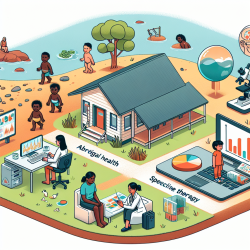Understanding the IEP Process in Wyoming: A Guide to Achieving Compliance and Improving Outcomes
In the realm of special education, the Individualized Education Program (IEP) is a cornerstone, serving as a roadmap for the educational journey of children with disabilities. In Wyoming, understanding the IEP process is crucial for ensuring that every child receives a Free Appropriate Public Education (FAPE) as mandated by the Individuals with Disabilities Education Act (IDEA).
The Wyoming Department of Education (WDE) presentation by Lenore Knudtson in 2015 highlights the significance of achieving compliance to improve outcomes for students with disabilities. This process involves telling the story of an individual child, emphasizing the unique needs and potential of each student.
The Purpose of IDEA and FAPE
The IDEA aims to ensure that all children with disabilities have access to education that prepares them for further education, employment, and independent living. It also protects the rights of these children and their parents. FAPE, or Free Appropriate Public Education, is a critical component of IDEA, ensuring that educational services are tailored to meet the unique needs of each child.
The Rowley standard, established by the Supreme Court, provides a two-part test to determine the appropriateness of a student's education:
- Has the state complied with the procedures set forth in the IDEA?
- Is the IEP reasonably calculated to enable the child to receive educational benefits?
The Role of Parents in the IEP Process
Parents play a vital role in the IEP process. They have the right to participate in team decisions, be involved in placement decisions, and receive notice about any proposed or refused changes regarding their child's education. Prior Written Notice (PWN) is an essential procedural safeguard, keeping parents informed and involved in the process.
Comprehensive Evaluations: The Starting Point
The IEP process begins with a comprehensive evaluation of the child, ensuring that all areas related to the suspected disability are assessed. This evaluation informs the Present Levels of Academic Achievement and Functional Performance (PLAAFP), which in turn guide the development of measurable goals and the provision of special education services.
Measurable Goals and Progress Monitoring
Measurable goals are the foundation of an effective IEP. They must be clear, specific, and designed to address the child's educational needs resulting from their disability. Progress towards these goals must be regularly monitored and reported to ensure that the child is making adequate progress.
Least Restrictive Environment (LRE)
The IDEA emphasizes the importance of educating children with disabilities alongside their nondisabled peers to the maximum extent appropriate. The IEP team must consider a range of supplementary aids and services to support the child's placement in the regular classroom setting.
Ensuring Success Through Collaboration
The IEP is a living document, subject to amendments and revisions as needed to address the changing needs of the child. Collaboration between educators, parents, and service providers is essential to ensure that the IEP remains relevant and effective in promoting the child's educational success.
For more information, please follow this link.










